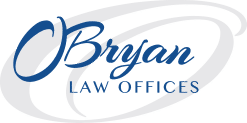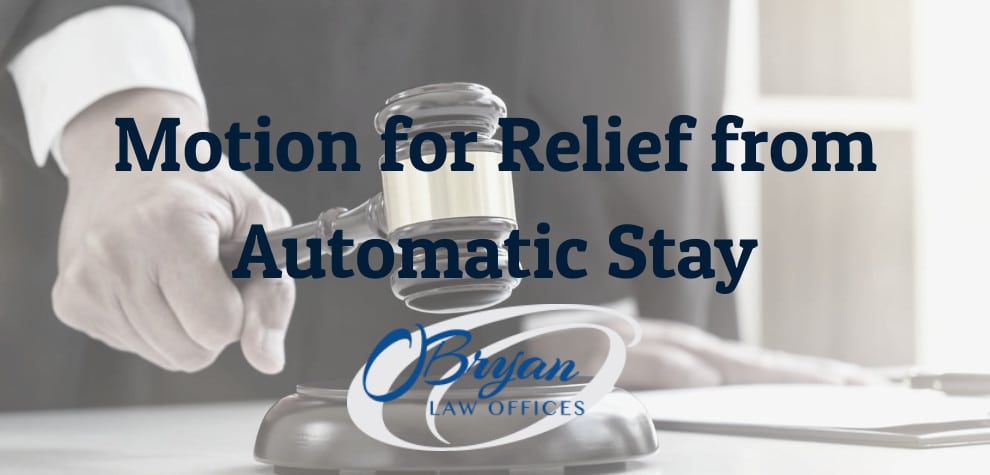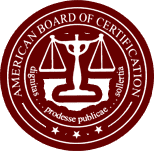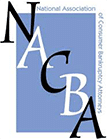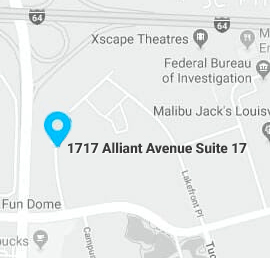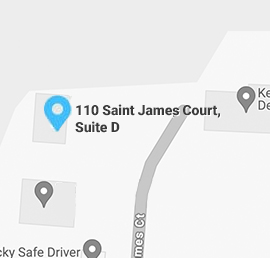One of the most important pieces in getting relief from debt is filing for bankruptcy. Bankruptcy has a host of benefits, including preventing creditors and collectors calls, stopping garnishments or foreclosure proceedings – just to name a few. But how does this all work? This article will discuss the automatic stay and its function as it relates to bankruptcy filings, what causes an automatic stay’s end date, and so much more.
At O’Bryan Law Offices, we’re a family-owned and operated firm that concentrates on bankruptcy cases in Kentucky and Indiana. Legal issues like these can feel chaotic and uncomfortable. That’s why we make it our mission to put you back in control of your finances. Our experienced attorneys aim to help our clients regain financial independence. If you’d like to discuss your case over a free consultation, or get advice on bankruptcy planning and asset protection, call our office at 502-339-0222 today.
What Is the Automatic Stay?
The automatic stay granted by the Bankruptcy Code is an important protection that you receive when filing for bankruptcy. It begins at precisely the moment you file your case, and it’s called “automatic” because of this. You can show exactly what time-stamp on your petition corresponds to a beginning point using data from court records. In addition, once all documents have been filed with the courts in order to initiate proceedings, notice about these actions should be sent to all of your creditors.
What this notice means for creditors is that they must stop their collection efforts, including calls, wage garnishments, and foreclosure proceedings. However, sometimes a delay between the timestamp the ceasing of collection activities happens. This is due to the fact that creditors mainly receive their notices through the mail, which is obviously not the fastest way to distribute information. Fortunately, if any of your creditors continue their collection efforts after they receive a notice, they risk a sanction from the bankruptcy court.
What is a Motion for Relief From Stay?
A motion for relief from automatic stay, also known as a stay relief motion, is something a creditor requests from the bankruptcy court. They essentially ask the court for permission to continue certain collection actions against you. In general, we see secured creditors file these motions. Secured creditors hold property interests, like mortgages or car loans, in securing your debt payments. Basically, these property interests are security for the loan. So if you fail to make timely payments, the creditor takes the property back. To reiterate, the stay relief motion, if granted by the court to the creditor, allows the creditor to resume certain collection efforts.
For example, if you file for a Chapter 7 bankruptcy, your creditor will likely file a stay relief motion in order to resume foreclosure proceedings on your home. Let’s say they do this because you are behind on your mortgage payments. In this case, the court grants the creditor’s request due to your behind payments. However, if you remain current on your payments, your creditor is unlikely to even file a motion for relief from automatic stay. If they still chose to file the motion, it is highly unlikely that the court would grant it. This is because the creditor is not experiencing financial harm.
What Happens After Automatic Stay is Lifted?
Now let’s say the court grants the creditors motion for relief from automatic stay, and the stay is lifted. Now what? The creditor now has the ability to move forward with their foreclosure or property repossession, or even eviction proceedings. When this happens, we recommend contacting the creditor directly. This allows you the chance to come to a mutual agreement of either surrender or a move-out date for yourself. It also facilitates a smooth transition, and eliminates the possibility of creditors taking you by surprise. Essentially, you can still come up with a plan of action for yourself with the help of an attorney.
Another benefit of surrendering secured property is that any unsecured debt portions are wiped out with your bankruptcy discharge. However, surrendering secured property without the protection of a bankruptcy filing leaves you responsible for deficiency balances. When this happens, you no longer have the property, but you are still responsible for paying on it. If, for some reason, extra money is left over after foreclosure or repossession, you actually might be able to claim a portion of the proceeds for yourself.
How to Fight a Motion for Relief From Automatic Stay?
First of all, don’t worry about being surprised by a motion for relief. Legally, you must receive notice of the creditor’s motion for relief from automatic stay, as well as your hearing date. Then, make sure to respond to the motion within 14 days. Failing to respond during that time frame might result in the court lifting your stay automatically.
Two main methods exist for fighting a motion for relief from automatic stay. These types are “procedural” and “substantive” objections. Basically, procedural objections challenge the manner in which the motion was filed, while substantive objections challenge the actual substance of the motion. Below, we outline the details of each.
Procedural:
Procedural objections generally involve challenging a mistake on the part of the creditor. In other words, they failed to completely follow the rules. As an example, let’s think about the notice of the motion of relief. If the creditor fails to serve you and your attorney with the motion, your attorney will use this procedural blunder to challenge the motion.
As another example, let’s say that you and your attorney were not given proper notice of the hearing date. Your attorney will object on the basis that, in failing to notify you of your hearing date, the creditor denied you ample time to prepare. Lastly, failing to attach proper documentation when your creditor serves you could result in an objection.
Substantive:
These objections are a bit more complicated, as they require a thorough understanding of the Bankruptcy Code. Let’s say that your creditor wants to proceed with foreclosure on your home, and files a motion for relief from stay. Your attorney will likely object on the basis that you confirmed a reorganization plan, or that it will be confirmed soon. Also, you can object if you applied for or received a loan modification agreement which will lower your monthly mortgage payments.
How Long Does the Automatic Stay Remain in Effect?
Keep in mind that filing for bankruptcy triggers the stay, hence “automatic stay.” In cases where debtors have only one bankruptcy dismissed in the past year, the automatic stay remains in effect for 30 days after filing for bankruptcy. In cases where debtors have two or more bankruptcies dismissed in the past year, the automatic stay does not apply. If you have no previous bankruptcy dismissals, the stay remains in effect until a debtor receives a discharge.
Top Louisville Bankruptcy Attorneys
With the stress and anxiety of bankruptcy mounting, we’re here to remind you that you don’t have to suffer alone. If you have financial struggles that you’re unsure of how to navigate, you need the experience of O’Bryan Law Offices. Our attorneys focus heavily on bankruptcy cases, so we’re highly qualified and knowledgeable when it comes to these cases. Our team of Kentucky bankruptcy attorneys will help you navigate your way through these tough times, and eventually start anew. For a free consultation, call our office at 502-339-0222 today.
